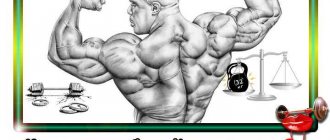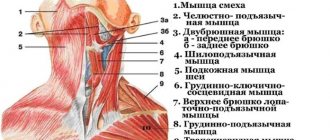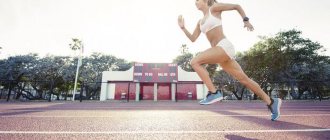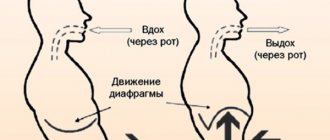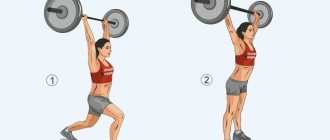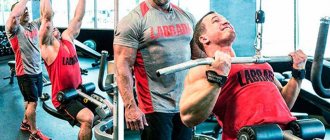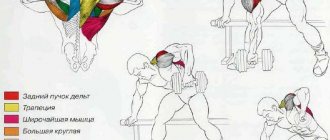What kind of exercise is this
The raider row to the chest is one of the most unusual movements in its execution, which is aimed at increasing the width of the chest. It was invented and popularized by the famous strongman Piri Rader. During the golden era of bodybuilding, this exercise became invaluable. It is still used in professional bodybuilding today, where a few extra centimeters in chest volume can radically change the outcome of a performance.
In terms of technique, the Rader row is not a strength exercise, but a stretching exercise. Movement provides the maximum effect in adolescence (and up to 25 years), when the musculoskeletal system is still at the stage of formation. However, it will be useful at any other age. The technique also has a pronounced effect on women. Traction helps to slightly enlarge the breasts and improve their shape.
The specificity of the exercise is such that it does not require simulators or additional devices. It is enough to approach any support: door frame, exercise machine frame, tree, etc.
Raider deadlift in modern bodybuilding
This exercise is very rare and highly specific. Not every experienced athlete with many years of experience will be able to clearly and confidently answer the question: what is the Rader deadlift and what is the technique of execution. You won’t find it even in the largest Russian online catalog of physical exercises, Daily Fit. What can we say about the mass audience?
This exercise is called in honor of the American bodybuilder, founder and co-author of the Ironman athletic magazine, who introduced it in the 1930s. Despite the word “traction” in the name, the movement itself does not involve strength work. In its effect on the osseous-ligamentous apparatus, it is tensile. Aimed at expanding and increasing the volume of the chest.
In combination with squats
In many bodybuilding manuals you can find a popular set of exercises to expand the sternum. Pullovers in a superset with deep squats are recommended as a working tool. In deep squats, you hold a barbell on your traps and lower yourself into a squat until the back of your thighs and calves almost touch.
After completing a set of squats of 10-12 repetitions, you need to immediately begin pullovers. The pause between two exercises is just long enough to put the apparatus on the racks and move on to another simulator.
The full squat is a hard exercise in itself and always causes rapid breathing and heart palpitations. Performed with considerable intensity, it provides powerful hyperventilation of the lungs. That’s why such heavy squats are called breathing squats. As a result, the chest expands and the pectoral cartilage is activated and stretched.
To fix the expanded pectoral cartilage in this state, immediately after squats, perform a pullover approach with a heavy dumbbell or barbell.
One of the options for stretching pullovers is the Rader row, only it is performed not while lying on a horizontal bench, but while standing. The only equipment required is a stable vertical support: a power frame rack or part of a wall.
Benefits and harms
The deadlift has a number of distinct benefits, which is why it is recommended to add the exercise to any training program. Main advantages:
- Expands the chest in volume.
- Provides powerful static load.
- Complete absence of risk of injury.
- Increased breast volume in women.
- The exercise is not a strength exercise, so it can be performed every day and get quick results.
All the disadvantages are related only to how to do the raider deadlift. They are leveled out by mastering the correct technique and the ability to focus the load on the pectoral muscles.
What does it represent?
The Rader deadlift was invented by the man who gave this exercise his last name - Piri Rader. It was he who first substantiated the importance, goals and technique of this traction.
So what is the point of the Rader pull? It allows you to stretch the cartilage tissue that connects the bones of the chest and sternum. At the same time, you need to build up muscle mass - then the chest will look wide and pumped.
Ideally, young people who are still growing and whose skeletal formation has not yet completed can significantly change their figure for the better.
As for adult and “hardened” athletes, with the help of the Rader technique they can:
- Still, expand your chest a little, even if just a centimeter;
- straighten the pectoral cartilages that shift under load or from sedentary work;
- straighten the lungs, make it possible to increase their volume with the help of subsequent exercises;
- relieve spasms of the muscles of the back and sternum;
- relieve tension in the lower back;
- stretch the muscles of the sternum and arms;
- relax your neck muscles.
Rader deadlift technique
Unlike conventional strength movements, where the main task is to perform the function of the active muscle and adhere to the technique, the features of the “Rider” are to maintain tension in the muscles in a static mode.
Technique for performing the Raider deadlift:
- Go to the chosen support and stand vertically next to it. Grasp the support with your hands (just above your head), feet shoulder-width apart, back straight.
- Take a deep breath and hold your breath. Begin to pull your arms towards you and down a little, holding the support firmly.
- Hold the peak concentration in the muscles for 4-6 seconds, then exhale and repeat the approach.
During concentration of tension, it is very important not to engage the abdominal muscles. In this case, the main part of the load will fall on them and the effect for infants will be significantly reduced.
It is also important to take into account that during the main phase (when the body moves slightly forward), you need to not only pull your hands down a little, but also try to “squeeze” the support you are holding. Imagine that you are holding a ball that needs to be squeezed. This will help you understand the correct technique and learn how to concentrate tension on the right areas.
What muscles work?
Raider thrust uses:
- primarily the pectoral muscles;
- arm muscles, including triceps;
- back muscles: upper and lower back;
- buttocks;
- muscles of the back of the legs.
But it is recommended to simply “release” the abdominal muscles. During the exercise, you need to bend in the lower back, which will make your stomach automatically retract, but you don’t need to strain it.
Who is it suitable for?
The exercise is suitable for absolutely everyone, regardless of age, physical fitness and other conditions. The only exception when deadlifts should not be performed is during the rehabilitation period after an injury to the chest or shoulder muscles (separation, sprain and other reasons in which it is necessary to completely exclude motor activity of the damaged area).
Deadlifts are great not only for men, but also for women. Performing the movement on a regular basis can, within a couple of months, give tangible results in increasing the tone of the pectoral muscles and a slight increase in volume. It is worth considering that, unlike strength exercises, the muscles do not contract during deadlifts, so the movement does not have a negative effect on posture (due to the rotation of the shoulders inward).
Raider thrust: what and to whom
At its core, the Rader row is a stretching exercise, not a strength exercise. However, its benefits for bodybuilders are invaluable. The paternity of the Rader thrust, as surprising as it may be, belongs to Piri Rader.
This exercise will be useful to perform especially at a young age, when the body has not yet stopped developing. Of course, no one prohibits athletes aged 30 years and older from performing Rader deadlifts - the effect, of course, will be there. True, not so noticeable.
If you look at it this way, then the Rader row is not a separate independent exercise. Rader rows should be performed between sets, as well as after completing squats and chest presses. The goal of performing the Rader deadlift is to stretch the spine, stretch the upper back, chest and lower back (and oh, how much it gets in squats. And in everyday life too - this is said by a person whose lower back is injured).
Those athletes who regularly perform Rader rows are even visually different - their shoulders and sternum are noticeably wider, and their posture subtly resembles a ballet bearing. All this is the result of constant training of internal muscles.
Recommendations for the exercise
Taking into account the fact that the exercise is highly specialized and technically complex, following the basic recommendations becomes mandatory. The most important points:
- Select the height and width of placing your hands on the support for yourself (depending on individual characteristics). Ideally, you should feel slight discomfort and burning in the chest muscles, this indicates correct execution.
- In one workout, it is optimal for beginners to do 10 to 20 repetitions of 4-6 seconds each with a minimum break of 3-6 seconds. At a more advanced level, it is recommended to perform 3-5 series of 8-10 repetitions.
- Relax your abdominal muscles as much as possible to increase the efficiency of the movement.
- Bend your lower back slightly; this position will help you better maintain tension in your chest.
- The back should always be straight, the neck should be in a natural position.
Breathing is an extremely important point that affects technique. Therefore, before starting the approach, you need to take a powerful breath, and after finishing, exhale.
And also read how to do deadlifts in a crossover →
What is the exercise for?
In fact, the creator of the Rader deadlift performed this exercise as part of a breathing squat program.
It is aimed at expanding the chest and is not forceful. It’s easy to guess that the closest alternative designed to stretch the chest and increase its volume is a breathing pullover. The effectiveness of such exercises greatly depends on age. The most impressive results can be achieved at a young age, when our skeleton continues to grow and form. For example, men grow to an average age of 20-27 years.
But even at an older age, you can use the Rader traction; the situation is far from hopeless. It’s just that the results are more modest, but additional centimeters of volume in any case will not be superfluous.
Analysis of the exercise
The Rader row is a “stretching” exercise included in the strength training program as an auxiliary exercise. This exercise is often considered as an alternative to breathing pullovers, aimed at developing and increasing the volume of the chest by stretching the osteochondral tissue.
During traction, the following remain in static tension:
- pectoral muscles;
- teres major;
- latissimus and dorsi extensors;
- intercostal muscles.
The effectiveness of the exercise is directly proportional to the age of the athlete. It is believed that the Rader deadlift provides the greatest training benefit in terms of chest development and expansion to young athletes—up to 25 years of age. As training practice proves, by performing deadlifts you can increase the volume of the trained area by 1-3 cm.
However, it makes sense to perform the exercise at a later age, since the ability of cartilage tissue to adapt to mechanical stress (that is, to recover and super-recover) remains throughout life.
How to do the Rader deadlift correctly
As the pros say—and there's no reason not to believe them—it's important to trust your gut when performing Rader deadlifts. It is important that, firstly, during the entire exercise you feel slight discomfort in the chest area, and secondly, that you feel maximum stretching of both the muscles and cartilage in the sternum area.
Starting position: the athlete stands with his hands on the horizontal bar, door frame or simply the corner of the wall. The legs are spread wider than the shoulders, the arms are raised above the head and rest on the support. The pelvis is set back, the back bends in the spine.
To perform a deadlift, you need to pull your arms down and towards you so that you feel how the cartilage and muscles are stretched. There is no need to strain your stomach. He must be as relaxed as possible, otherwise there will be no benefit from the exercise.
Read more: 100 push-ups program for men for 6 weeks
The duration of each pull should be no more than 10 seconds. After this, you need to relax and perform a few more repetitions.
Tips for doing the exercise
Tips for Performing Raider Rows
To make this exercise useful, remember:
- After performing the Rader row, there should be some tension in your chest. It should not be pronounced or painful;
- try to perform deadlifts in different positions, bringing your legs together and spreading them, leaving your hands at the level of your head or slightly above it;
- you must find the ideal position in which you will be as comfortable as possible;
- do not spread your arms too wide, they should be close to each other, this is the condition for performing the exercise;
- There must be tension in the chest; if it is not there, it means that the Rader row is being performed incorrectly; consultation with a professional is required;
- Without a good arch in the lower back, the Rader row cannot be performed;
- The exercise must be performed after a set of breathing exercises in order to prepare the chest for stress;
- you need to start the exercise with 10 approaches, gradually increasing the number to 20-30;
- relax your stomach, the abs do not require tension;
- do not start with a long delay during the exercise, otherwise you may experience an attack of dizziness or fainting;
- To make the chest wider, you need to perform the exercise daily or every other day; long breaks are not recommended here.
